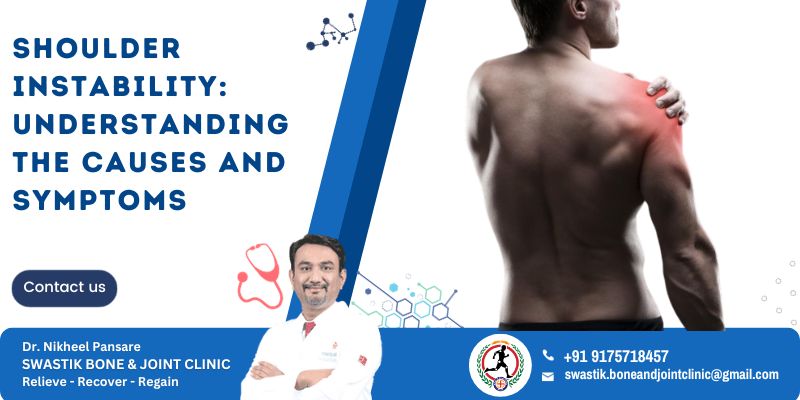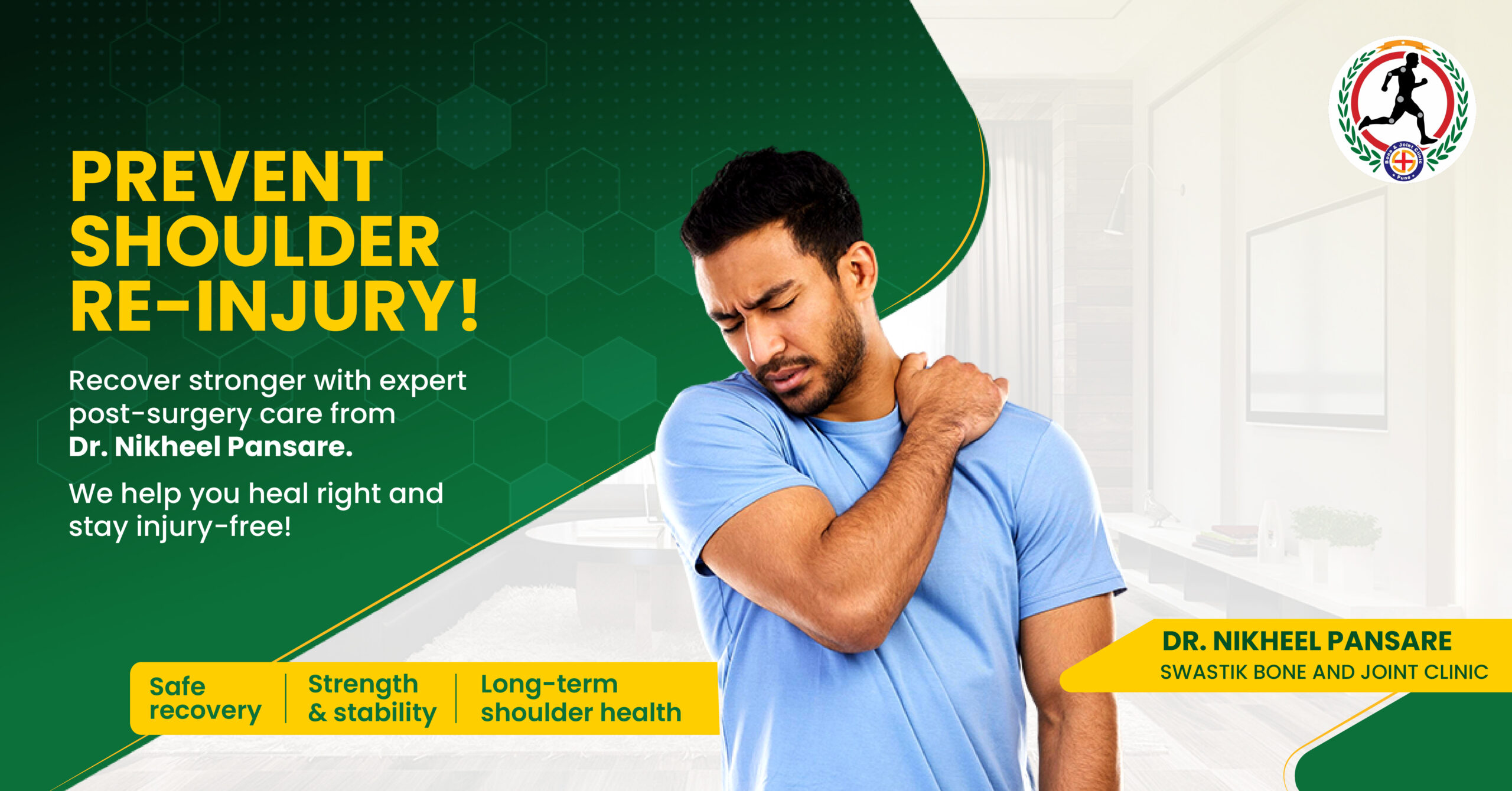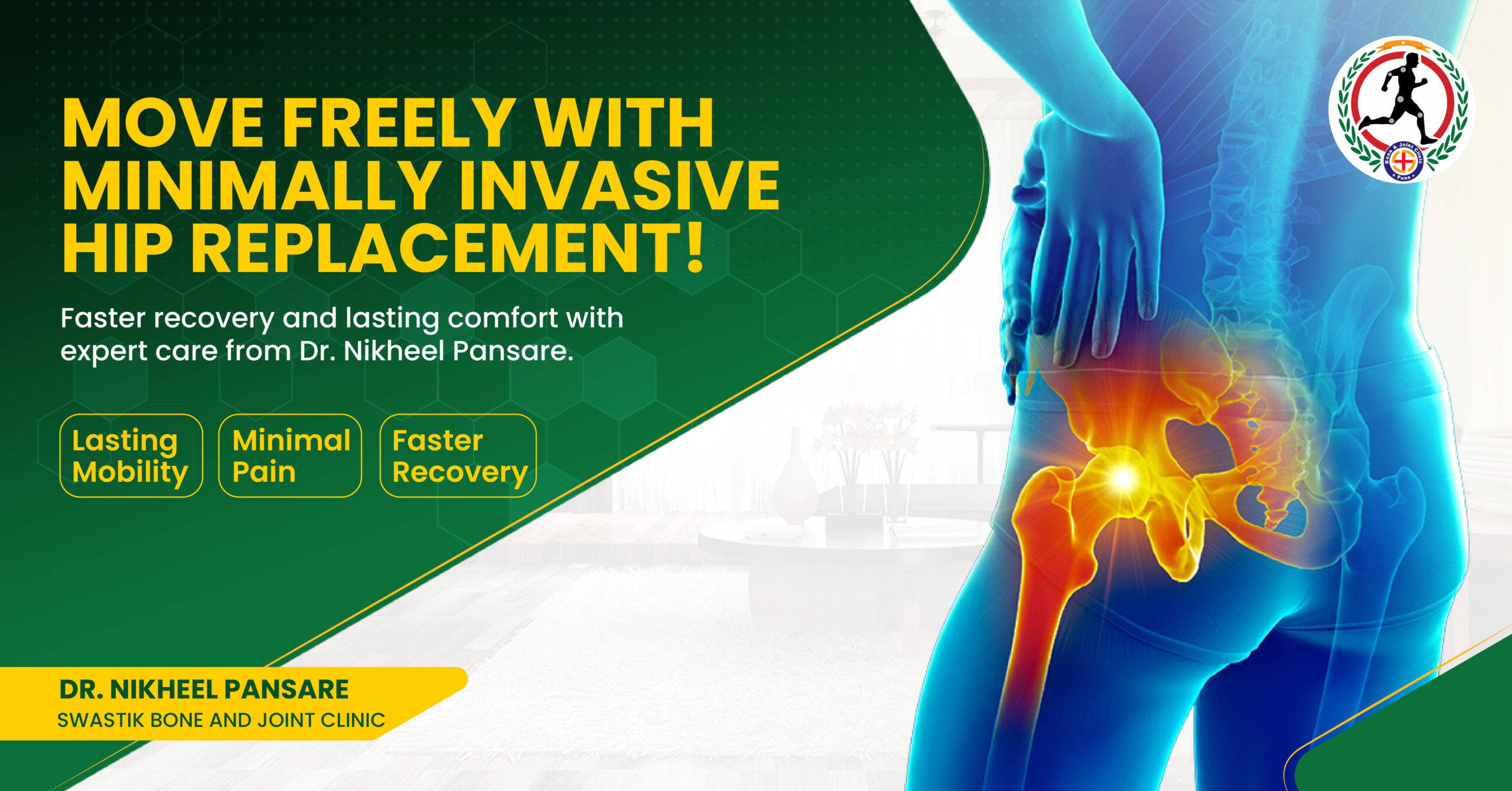Shoulder instability is a condition that can cause discomfort and limit the functionality of your shoulder joint. To effectively manage and treat this condition, it’s crucial to understand its causes and symptoms. In this blog, we’ll delve into shoulder instability and introduce you to the expertise of Dr. Nikheel Pansare, the best orthopedic surgeon in Pune, practicing at Swastik Bone & Joint Clinic.
What Is Shoulder Instability?
Shoulder instability occurs when the structures that surround and support the shoulder joint become loose or damaged. As a result, the upper arm bone (humerus) can slip partially or completely out of the shoulder socket (glenoid). This condition can lead to recurring dislocations or subluxations, where the shoulder temporarily moves out of place.
Common Causes of Shoulder Instability
Several factors can contribute to shoulder instability, including:
Trauma: A significant injury, such as a fall or collision, can damage the shoulder structures and lead to instability.
Repetitive Overhead Movements: Activities that involve frequently raising the arm overhead, like throwing or swimming, can strain the shoulder and increase the risk of instability.
Genetics: Some individuals may have a genetic predisposition to lax ligaments, making them more prone to instability.
Symptoms of Shoulder Instability
The symptoms of shoulder instability can vary in intensity but often include:
Pain: Persistent shoulder pain, especially when using the arm or during specific movements.
The feeling of Instability: Sensations of the shoulder “slipping” or feeling loose, particularly during certain activities.
Limited Range of Motion: Difficulty in moving the shoulder and arm freely.
Recurring Dislocations: In severe cases, the shoulder may dislocate or subluxate frequently.
Diagnosis and Treatment
Diagnosing shoulder instability typically involves a physical examination, medical history review, and imaging tests, such as X-rays or MRI scans. Once diagnosed, treatment options may include:
Conservative Measures: Rest, physical therapy, and exercises to strengthen the shoulder muscles may be recommended for mild cases.
Medications: Over-the-counter or prescription medications can help manage pain and inflammation.
Corticosteroid Injections: In some cases, corticosteroid injections may provide temporary relief from pain and swelling.
Surgery: For severe or recurrent instability, surgical intervention may be necessary which is often an arthroscopic (keyhole) surgery.
Why Choose Dr. Nikheel Pansare?
Dr. Nikheel Pansare’s expertise in orthopedic care, particularly in treating shoulder conditions, makes him the best choice for shoulder arthroscopic surgery & other shoulder procedures like shoulder replacement surgery, and reverse shoulder replacement surgery in Viman Nagar near Kharadi, Pune. His patient care and utilization of advanced surgical techniques ensure the best possible outcomes.
If you’re dealing with shoulder instability or seeking a shoulder replacement doctor in Viman Nagar near Kharadi, Pune, Dr. Pansare and his team at Swastik Bone & Joint Clinic are here to help. They focus on providing personalized care and timely solutions to help you regain shoulder stability and function.
In conclusion, shoulder instability can be a challenging condition, but with the right care and treatment, you can achieve a pain-free and stable shoulder. Trust Dr. Nikheel Pansare at Swastik Bone & Joint Clinic for expert care and a path toward recovery from your shoulder instability.
Click here to learn more information about Ankle Arthroscopy








